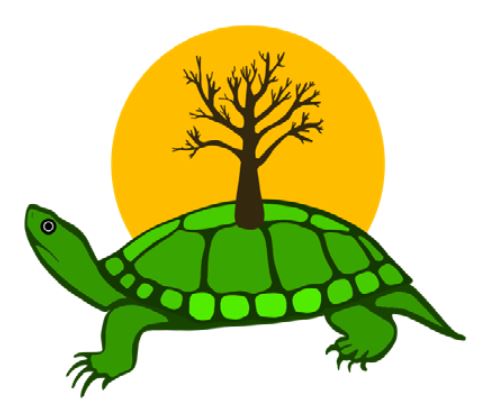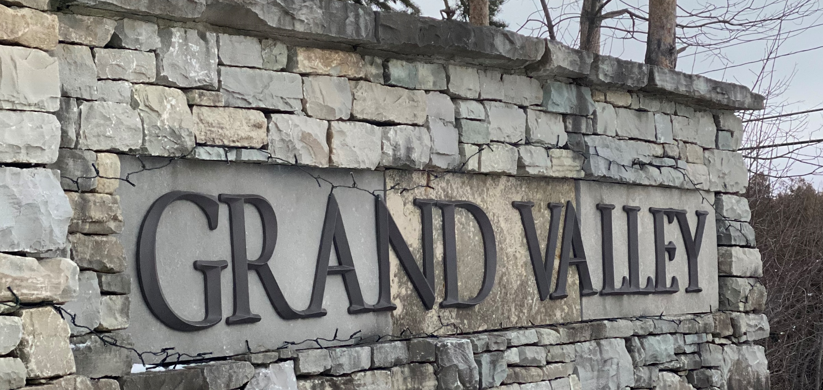History of Our Community
Grand Valley was settled in 1855 when the George Joyce family built a log house and barn on the southwest corner of Emma and Amaranth Streets. Later they built a log tavern on the southwest corner of Main and Amaranth Street. In 1860 a Municipal Council was created, the first schoolhouse built, and the first Post Office was established with resident Sam Stuckey holding the position of Post Master.
By 1869 the village had grown to fifteen residents and nine buildings and in 1870 the first store had opened.
The rural area of Grand Valley was known as East Luther in Dufferin County (formed in 1881), which was separated from the Township of Luther in Wellington County. Some of the early settlers had to walk at least 10 miles to receive or send mail until they got a post office at Keldon in 1884, and a little later in Colbeck, Monticello, Peepabun, Tarbert, Wesley and Leggatt. The first gravel road was constructed in 1874.
The rural area consists of an area of approximately 38,000 acres of woodland teeming with wildlife such as deer, bear, wildcat, wolves, rabbits and partridges which serves as food for the new settlers. The business activities of the village depended almost exclusively upon the surrounding farmers until 1871 when railroad access meant goods could be acquired or sold elsewhere.
The hamlet was originally called Luther Village before the name was changed to Grand Valley in 1886. It was part of Wellington County until 1881, then, became part of the newly formed Dufferin County. The urban centre of the municipality incorporated in 1897 to become the Village of Grand Valley, making it independent of the surrounding East Luther Township. It was not until almost a century later in 1995 that East Luther Township and the Village of Grand Valley would amalgamate to become one municipality. This new municipality was known as the Township of East Luther Grand Valley. In 2012 the name was changed once again, and the entire municipality became the Town of Grand Valley
To learn more about the history of Grand Valley and surrounding area, these Historic DVDs are available at $20 each and produced by our Historical Society. For more info please Email the Grand Valley Historical Society.

For more information on the Town of Grand Valley's history, contact the Grand Valley Historical Society by Emailing the GVHS.
PLEASE TAKE OUR HISTORICAL WALKING TOUR FOR A DETAILED LOOK OF OUR BUSINESS SECTOR
at our Historical Walking Tour Page
Compare yesterday's memories with Today.
Indigenous Heritage in the Grand Valley area
This document has been created to aid in recognizing the long-standing and enduring relationship that exists between Indigenous peoples and the traditional territories residing within present-day Dufferin County. By acknowledging and examining the past, we can become more aware and better informed. We can then use this knowledge to build relationships and a better future where the history, heritage, rights and freedoms of all citizens are respected. This document was created to serve as an introductory resource. It will provide a starting point for learning with brief overviews and summaries, but will provide links and suggestions for third-party resources to support more comprehensive or in-depth learning. Attempts have been made in the creation of this document to utilize information from varied and credible sources, but it is by no means definitive. The Museum of Dufferin welcomes input that can add educational value to this resource and will update it according


The Haudenosaunee (Six Nations)
Pronunciation: “ho-DEE-no-Sho-nee”
The Haudenosaunee or “people of the longhouse” are a confederacy of six nations: the
Seneca, Cayuga, Onondaga, Tuscarora, Oneida, and Mohawk.
The Haudenosaunee people traditionally lived in longhouses, but the longhouse was also a
symbol of their political organization.

The Haldimand Tract
In 1791, the province of Upper Canada was created and the Haldimand Proclamation came under review. It was determined that Haldimand had mistakenly assumed that the headwaters of the Grand River resided within the territory purchased from the Mississauga in 1784. A surveyor was appointed to clarify the boundaries of the tract. This led to lands laid out in the original agreement being with-held from transfer to the Haudenosaunee.

In 1793, Thayendanegea (Joseph Brant) petitioned Lieutenant-Governor John Graves Simcoe for control over the Haldimand Tract. The resulting Simcoe Patent of 1793 confirmed the surveyors new boundaries, limited the Haldimand Tract to 111,000 hectares for exclusive use by Six Nations, and surrendered the rest to the Crown for sale or lease. Simcoe’s patent was rejected by the Haudenosaunee and therefore the Source (headwaters) is still considered to be part of the treaty agreement. The Haldimand Proclamation is now overseen by the Six Nations of the Grand River in Ohsweken, Ontario (near Brantford). The Mohawk name for the Grand River is 'O:se Kenhionhata:tie', which means "Willow River". This map shows the boundaries of the Haldimand Tract from the source of the Grand River to Lake Erie. Also outlined are the current boundaries of the Six Nations Reserve at Ohsweken, Ontario (near Brantford)


Treaty No. 18 is the Lake Simcoe-Nottawasaga Treaty. It dates to October 17, 1818. This treaty was made between William Claus, Superintendent General of Indian Affairs and four chiefs of the Chippewa [Ojibway] Nation. The treaty was made to document the sale & surrender of 1,592,000 acres of Chippewa Nation land to the Crown in exchange for a sum of "1200 pounds currency in goods at the Montreal price" paid annually. Areas of Dufferin County covered by this treaty include: Mono, Mulmur, Melancthon, Shelburne, Amaranth, and Town of Grand Valley (East Luther). Presently, Treaty 18 and the six other Williams Treaties are overseen by seven Indigenous Nations who have joined together with the mission to “ensure their rights to and the relationship with the land is respected."
Haudenosaunee or Iroquois
Learn more about the history and heritage of the Haudenosaunee:
(click the hyperlinked titles below to access resources)
• Haudenosaunee or Iroquois? An Educational Film by the New York State Education Department
• Haudenosaunee Confederacy History
• Canadian Encyclopedia: The Haldimand Proclamation
• Six Nations of the Grand River: Haldimand Proclamation
From Treaty Peoples to Treaty Nation by Greg Poelzer and Ken Coates
GoodMinds.com: First Nations, Métis, Inuit Books
Historica Canada: Indigenous Arts & Stories
The Clay We Are Made Of: Haudenosaunee Land Tenure on The Grand River
by Susan M. Hill
We Share Our Matters: Two Centuries of Writing & Resistance at Six Nations
of the Grand River by Rick Monture
Woodland Cultural Centre



What are you looking for?
Contact Us
Town of Grand Valley
5 Main St. N., Grand Valley
Ontario L9W 5S6
Telephone: 1-519-928-5652
Fax: 1-519-928-2275
Hours: Mon-Fri 8:30a.m. to 4:30p.m. Closed holidays.
